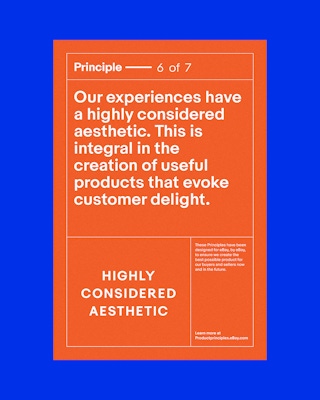
Understanding Inconsistency
In 1998, when Meg Whitman famously became eBay’s first CEO, the company had 30 employees with a product that was heavily reliant on the exchange market for Beanie Babies. Today, eBay is a multibillion-dollar marketplace with a highly diversified business and track record for successful acquisitions and spin-offs (PayPal, Skype, Stubhub, etc.) ©. Like many technology companies of the time, the shape of eBay’s growth was focused on individual product areas, each with its own monetization strategy, marketing approach and individual interpretations of brand guidelines. As such, it would have been entirely possible to engage with the brand in one area while assuming you were interacting with a completely different company in another.

Choosing Principles over Laws
In partnership with eBay’s global design team, Combo strategists realized early on that the traditional approach of developing more rigorous brand guidelines and attempting to force adoption would be met with headwinds and ultimately rejected. Therefore, the strategy team’s approach had to focus on seeking a different path to design consistency centered on achieving buy-in and adoption of a set of macro principles, such as “removing complexity and considered aesthetic.” These principles were intentionally framed to ensure contextual relevance across the siloed groups, with language that would have been difficult to find disagreement with.
Rules are not necessarily sacred; principles are.

Fostering Buy-In through Collaborating
Following initial due diligence, it was patently clear that any structure focused on “selling” the principles across the organization would fail. And so Combo constructed a buy-in model that ensured stakeholders had an affirmative and collaborative role in defining final language around the principles and, more importantly, defining how the principles would be actioned in their group. In this model, Combo strategists served as a moderator and catalyst, hosting dozens of in-person workshops and development sessions to progress stakeholder consensus, inclusion and, ultimately, action on the principles in their individual groups.
Students worked significantly harder for and learned more from the cooperative learning components than from the traditional lecture- and text-based components of this course.

Design Elevation
The unique aspect of this work was that, ultimately, the output would only be as successful as the effect it had on internal processes and implementation. The principles and process Combo developed to achieve this were not written in isolation but instead emerged from collaborative work sessions, the due diligence of every stakeholder teams’ context, challenges and cross-functional buy-in. Six months after adoption, follow-up audits of the work’s impact demonstrated that global design teams were implementing the principles and user experience was already showing dramatic improvements in elevated design approaches.
New business: Connect with a partner.
Job inquires: View our handbook.
Newsletter©: Sign up.
Combo
76 Bowery, 3rd Floor
NYC, 10013
Social Media
Instagram, LinkedIn
View our show reel:
Watch video
General inquiries:
hello@combo.co
Media inquires:
press@combo.co